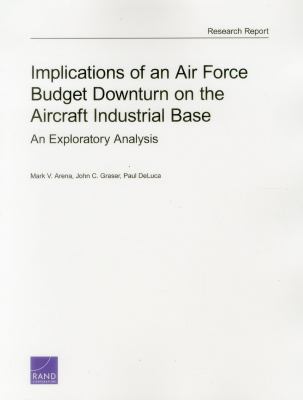
Book
|
Implications of an Air Force budget downturn on the aircraft industrial base : an exploratory analysis
Copies
1 Total copies, 1 Copies are in,
0 Copies are out.
Title
Implications of an Air Force budget downturn on the aircraft industrial base : an exploratory analysis
Digital Link
Subjects
Language
English
Published
Santa Monica, CA : RAND, ©2013.
Publication Desc
xv, 41 pages : illustrations (some color) ;
ISBN
9780833080233
(pbk. : alk. paper)
LCCN
2013031346
Series
Research report RR-248-AF
Dimensions
28 cm.









